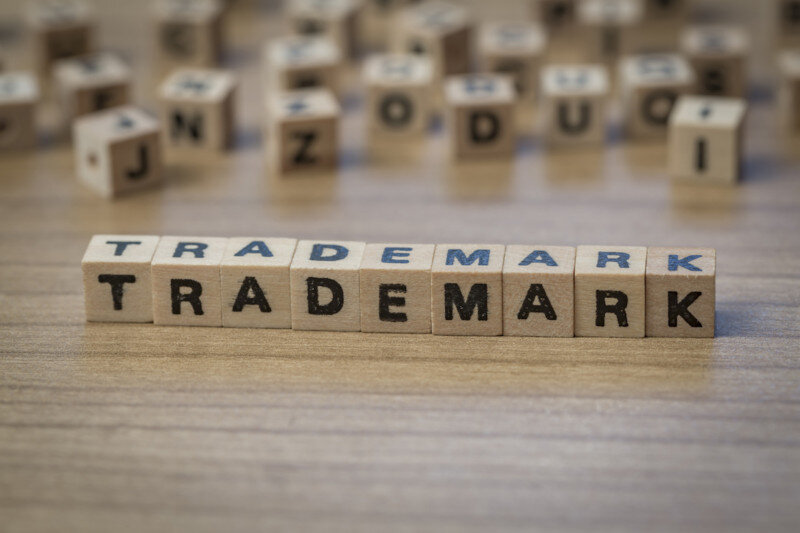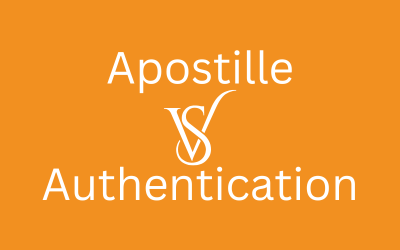Now that you’ve started your business, it’s time to protect its name. After all, your business name is — and will continue to be — one of the most crucial branding assets you possess. So, how do entrepreneurs protect that critical element from being infringed upon locally and nationwide? Registering a trademark with the United States Patent and Trademark Office (USPTO) is a wonderful step to accomplish that.
By registering for U.S. Federal Trademark protection, trademark owners are eligible for numerous benefits such as treble damages in some cases of infringement, the right to use the ® in your trademark, reduced brand confusion, and a streamlined process for securing your domains and usernames at social sites like Facebook, Twitter, and YouTube.
Definition of a Trademark
What is a trademark? A trademark is a word, phrase, symbol, or design (such as a business name or logo) that identifies the source of a product or service and distinguishes a brand from its competitors. Trademarks give owners of the protection of their marks from other businesses in the U.S. using those marks.
Preventing confusion in the marketplace is the primary purpose of trademarks. To obtain a trademark, you must file an application with the U.S. Patent and Trademark Office (USPTO).
If you’re still asking “what is a trademark?” read on for more details.
Benefits of Trademarking Your Business Name
#1. Trademarks Take Business Name Protection to a New Level
Forming an LLC or registering C Corporation in a state ensures that no other LLC or C Corporation can use the company’s name in that state. However, that does not protect the name in any other state.
So, if a business owner registers “T-Shirts Extravaganza, LLC” in the state of Utah, another “T-Shirts Extravaganza, LLC” could register the same business name in Texas, Delaware, California, or in any other state outside of Utah. Once that happens, if multiple T-Shirts Extravaganza, LLCs sell their products online, they’ll be competing in search engine results, and people may confuse the brands.
But you can stop that confusion from ever starting. A trademark prevents the name from being used by potential competitors throughout the entire United States.
#2. Trademarks Protect Company Logos
Trademark protection can apply to business logos, too. A logo is a design that combines text and graphic elements to create a visual representation of a brand. A business’s logo distinguishes it from other companies and helps the public readily recognize the brand. So, just as it’s vital to safeguard a business’s name, it’s helpful to trademark a company logo to prevent other businesses in the U.S. from using a deceptively similar logo.
#3. Trademarks Instill Public Confidence
When a business name or logo is a registered trademark, the public can have confidence it’s doing business with the real deal (the bona fide brand they want to buy from). People can feel more confident about engaging with a company because a trademark helps prevent unscrupulous companies from passing themselves off as someone else.
#4. Trademarks Offer Peace of Mind and a Legal Leg to Stand On
A trademark provides a business owner peace of mind knowing that no one who has registered an LLC or C Corporation offering similar products or services can use their name or logo. (Note: This does not prevent sole proprietors or partnerships from using the same name because a federal government entity doesn’t regulate those entities’ names).
Theoretically, a business doesn’t have to officially register a trademark with the USPTO to protect it. If a company wants to use its name and logo exclusively, it may attach the TM symbol to them. This essentially means “this is mine,” and gives the owner “common law” rights to the marks.
However, a formally registered trademark offers greater legal protection because it gives the owner a better chance of winning an infringement suit. Registered trademarks are recognized by the ® after them.
Formal trademark registration also makes it easier for a company to recover digital properties associated with its business or products. For instance, it can help deter someone from claiming a website domain name or Twitter handle that’s the same or very close to another company’s registered trademark. A registered trademark can also make it easier for a business to recover digital assets (social media profile names and website domain names) if someone infringes upon them. For example, CorpNet ran into the issue of others trying to hijack our name on various social media platforms. Because we registered “CorpNet” as a trademark, we found it exponentially easier to recover our name on Twitter, Facebook, and YouTube, which minimized the legal fees associated with getting injunctions.
Trademark FAQs
When Should I or Can I Use the Trademark Symbol?
Before you have registered a trademark with the USPTO, you may use the TM symbol. After a trademark is registered with the USPTO, you have the right to use ® in your trademark. Many companies choose to use the TM or ® symbol with the first appearance of the company or product name in a document and then drop the symbol for each appearance after that.
What Do TM, SM, and ® Mean?
This is when the “what is a trademark” question gets down to the nitty gritty. Surely you’ve seen these symbols after business, product, and service names.
TM (sometimes referred to as “this is mine”) and SM are used to denote unregistered marks. These “common-law” trademark symbols may be used when you’re claiming ownership of the wording, symbol, or design—such as when you have a trademark application pending or even if you haven’t filed for an official trademark. Note that these informal trademarks potentially offer rights to your business name only in the geographic areas where you’re selling your products and services—they do not provide protection of your name on a national scale. Also, know that using these symbols does not totally guarantee your rights to the mark so you may have a tough time bringing legal action against another business if it uses a mark that’s identical or similar to yours.
As soon as the USPTO approves your trademark application, you may use the federal registration symbol “®” to identify your mark. That will protect your name in all 50 states, with the possible exception of geographic areas where a common-law trademark has been in effect. A critical word of advice: do not ever use the ® symbol (not even while your trademark application is pending) until your mark is officially approved and registered.
What’s the Difference Between a Registered and Unregistered Trademark?
Trademarks don’t actually have to be registered with the USPTO (US Patent and Trademark Office). If your company creates a logo or name that you want to use exclusively, you can attach the TM symbol and this essentially gives you “common law” rights. However, trademarks that are registered with the USPTO enjoy stronger brand protection (see “What are the benefits of registering a trademark?” below)Also keep in mind that in order to claim first use to a name, the name has to be “trademarkable” (i.e. not already in use by someone else) and needs to be in use in commerce. For example, if you think of a cool company name, you will need to actively market and sell a product or service using that company name for your common law trademark to be valid.
How Do I Know if a Name is Available for Me to Use for My Company, Product, or Service?
Before you incorporate or register your business with your state, you’ll need to check the state’s database of company names and make sure the name you want isn’t already in use. Name conflicts are one of the main reasons many LLC, corporation, or DBA applications get rejected. At this point, you should also conduct a free trademark search to check if your business name is available to use at the federal level. It’s also important to know that you can still infringe on someone else’s mark even if they’ve never formally registered it with the USPTO. For this reason, you should also run a comprehensive nationwide trademark search into state and local databases (beyond just your own state). This should include common law and county registrars.
How Long Does a Trademark Last?
Provided that you fulfill the renewal requirements, your trademark will have an unlimited lifespan. Once approved, your trademark will be in effect for ten years—and then you can renew it for another ten years. There’s no limit on how many 10-year terms your trademark may have.
If I’ve Already Registered My Name With the State, Do I Still Need a Trademark?
When you incorporate, form an LLC, or file a DBA (Doing Business As) for your new business, this process registers your business name with your state’s secretary of state. Before approving your application, the state checks that your name is distinguishable from all other business names registered in the state. Once approved, the business name is yours, and yours alone, to use within the state.
This protects anyone else from using your name within your state, but it doesn’t offer any kind of protection in the other 49 states.
If you’ve started a business that’s physically tied to your state (i.e. a hair salon or restaurant) and have no plans on expanding into other states, registering your name with the state or county might be enough brand protection for you. However, if you’re planning on conducting business outside your own state (i.e. you sell a product or you provide services and some of your clients may live elsewhere), you should look into trademark protection with the USPTO.
How Do You Apply for a Trademark?
Before you apply for a trademark, do some research to make sure your business name (or something very similar) isn’t already under trademark protection or that another company doesn’t have a pending application with the USPTO.
I also encourage you to enlist the help and expertise of a trademark attorney that can provide you with legal advice and make doubly sure your desired name is available.
I can’t stress enough how important it is to go through the name search process before you submit an application to the USPTO. Without that exercise, you might apply for a name that’s already in use. And if that’s the case, the USPTO will reject your application, and you’ll have lost the filing fee, not to mention the time you spent completing the application.
Expect to pay between $225 and $400 per class when applying for a trademark. Why the variance? The USPTO provides three different application options to choose from, with the primary difference being your readiness to submit a complete initial application and your willingness to conduct all correspondence electronically. If you hire someone to complete and submit the application for you, you’ll have some additional expense, as well. After you file your application, the USPTO will send you a receipt that marks your filing date. You may find it could take from nine to 12 months for the USPTO to process your trademark request. If your requested mark is complex or if issues surface during the review process, you might wait even longer. Although it costs a little more and takes longer than registering a business name, getting a trademark gives you exclusive rights to your business name throughout the United States. The peace of mind is priceless!
When Should You Apply for a Trademark?
Even if you haven’t started selling your products or services yet, you can take measures to protect your business name.
By filing an “intent to use” trademark application with the USPTO, you can reserve a trademark before you’re ready to launch your business. This can give you a head start rather than waiting to file an “actual use” trademark application, which applies when you are already using a mark in commerce.
The primary benefit of the intent to use application is that it regards your filing date as the “constructive use” date for establishing your rights to the mark. So, suppose you file an intent to use application on November 1, and another company files an actual use application on November 18. And then you start using your business name in commerce on December 1. You will be the owner of that trademark even though the other company began actively using it first.
I advise you to file an intent to use application only if you really do have a bona fide intention to use your business name in commerce. You must show objective evidence of your intention to use the mark. If you don’t, your application will be voided. The USPTO does this to prevent trademark trolls from trying to sit on the name and make money off of a legitimate business that wants to use it.
The fees are about the same for intent to use and actual use applications. With intent to use, however, you will also need to file and pay a fee for a statement of use after you start using the mark commercially.
You get six months to use your mark after you file your intent to use application. You can apply for an extension if you find you’ll need more time. With up to five possible six-month extensions from the USPTO, you have plenty of time to move forward with your business after your initial filing.
Although an intent to use trademark application and possible extension requests may seem like a hassle, realize that you can never know when some other business in the making thinks of the same awesome business name. If you don’t start using the name (or applying for a trademark on it) before the other business does, you may be left scrambling to dream up another name for your company.
Your Brand Is Worth Protecting
Building brand recognition takes an enormous amount of time and energy. Wouldn’t it be wise to take responsible steps to make sure another business doesn’t infringe on your hard work and reputation? Don’t keep asking ‘what is a trademark’ without getting help and taking the proper steps to protect your brand.
Forming an LLC or incorporating your business in your state is just the first step in protecting your business name. To safeguard it more fully and extensively, I encourage you to consider filing for a trademark.
As I shared earlier, a trademark attorney can be an essential resource in answering your legal questions and offering guidance as you work toward protecting your business name. The sooner you file, the faster you’ll have the assurance that your business name won’t be swept out from under your feet.





